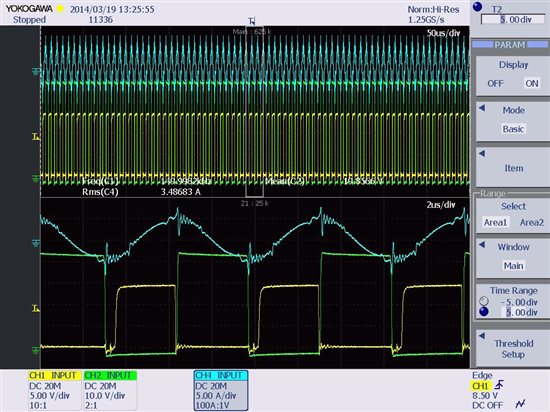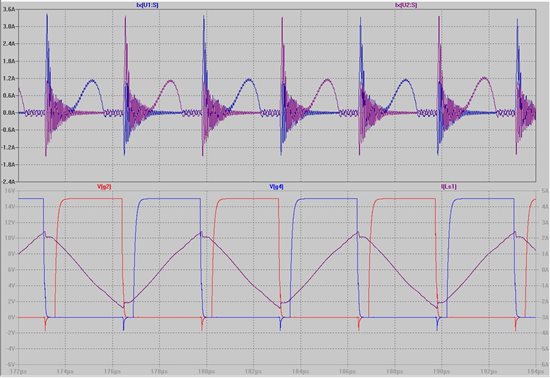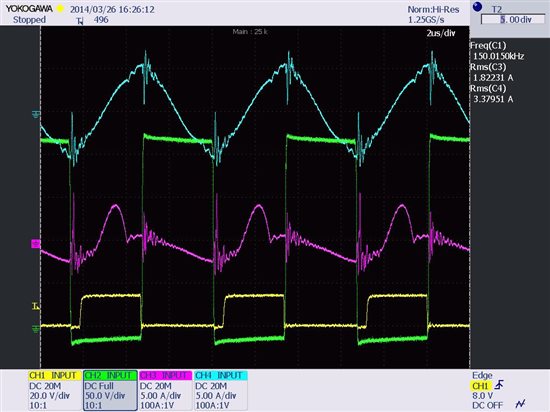Hi all,
I've been designing a full-bridge LLC resonant converter which is already constructed and in test. It almost works fine, but I detected an anomaly which I don't recognize.
Looking at the current waveform through the ressonant tank, I get a step approximately 0.5us after the mosfet turn-on. It can be seen in both sides of the waveform, although it's more significant during the incrementing slope.
The specifications of the power supply are:
- Power: 1.5kW
- Vin_nom: 400V
- Vout_nom: 48V(31A)-60V(25A)
- Freq. range: 140kHz - 200kHz (resonant freq. 200kHz)
- Center tapped transformer
- Synchronous rectification (by now, internal diodes are working as rectifiers)
In the image of the oscilloscope attached, the conditions are:
- Vin=200V
- Rload = 30ohm (light load)
- Fsw = 150kHz
Blue: tank current (to get the real value, must divide by 2)
Yellow: low-side mosfet gate signal
Green: Vdrain_source of the same low-side mosfet (oscilloscope scale not adequate)
When working at this condition, things work well although there appears this current step. But when increasing the input voltage (with same frequency) mosfets get burnt near 300V. When it works near the resonant frequency (200kHz), it works perfectly.
Can this step in the current waveform create any condition that makes the mosfets burn? What can generate this current step?
I've thought it could be the capacitance charge/discharge before the proper anti-parallel diode starts to conduct at the secondary. But I'm not sure of that.
I made some simulations with real models from the manufacturer, which I also attached. It can be seen that the rectifiers start conducting approximately 0.5us after the proper mosfet turns on at the primary. Can the step in the current correspond to that instant?
I hope you can help me. Many thanks,
Alex S.





